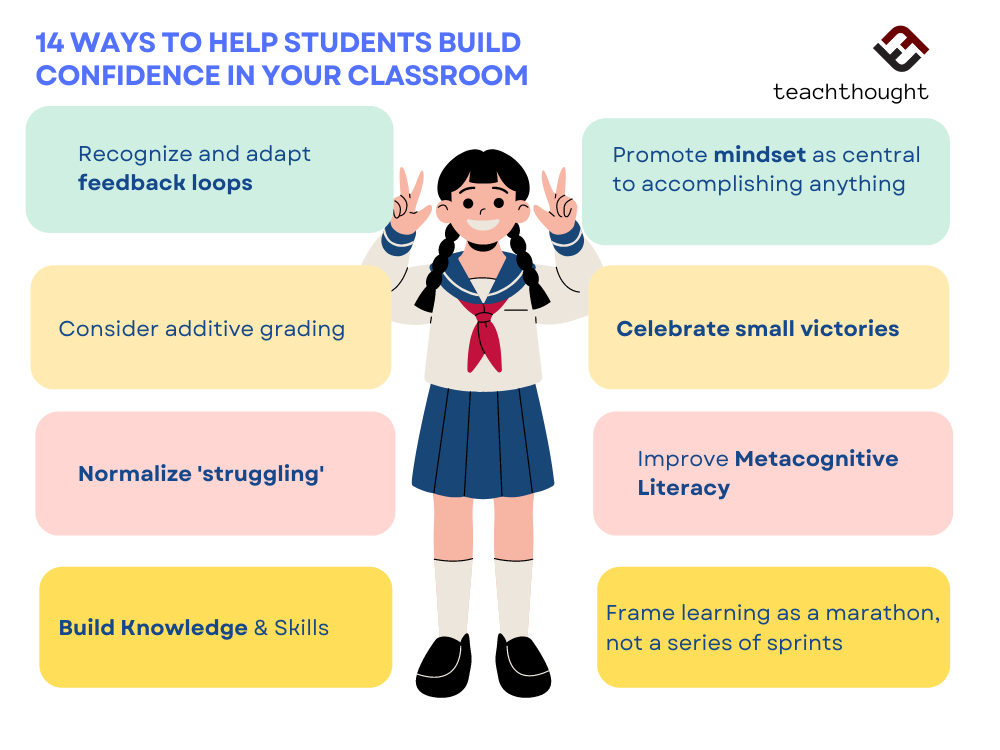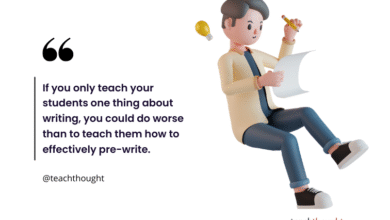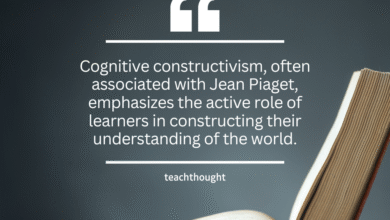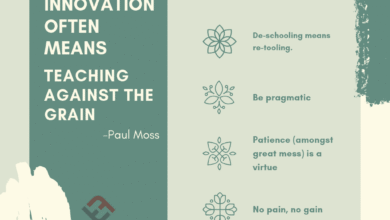


Once it’s begun, it’s difficult to fully separate the person from the task.
When the artist is painting, the painter and the act of painting become a single ‘thing.’ The painting becomes a part of it all, too.
As a teacher, your ‘self’ is embedded within your teaching—which is how it goes from ‘job’ to craft. The learning results are yours. You probably call them ‘your’ students. The same goes for students as well. There is a pleasing kind of string between the 8-year-old playing Minecraft and his or her digital creation.
This is the magic of doing.
But this also presents some problems. Students’ work and performance—both what they can and can’t do—are a part of who they are, and they are keenly aware of this. Even our language reflects this idea.
Did you do your best on your homework? (As opposed to “Was the best work done on the assigned homework?”)
Are you an A student? (As opposed to students who usually receive As on their report card.)
Are you confused? (As opposed to awkward sounding but entirely logical “Do you have confusion?”)
1. Recognize and adapt feedback loops.
2. Emphasize mindset as central to success
3. Improve metacognition/offer metacognitive strategies
Other Ways To Build Confidence In Students
4. Celebrate small victories (and don’t always call them small victories)
5. Normalize (short-term) struggling (or call it a different word–like ‘grinding’)
6. Let them see others struggle–but people credible to that student: entertainers, athletes, artists, etc.–and see them emerge from that struggle stronger for having endured.
7. Help them understand that we all struggle with many things, and it’s our response to that struggle, not the struggle itself, that will dictate our suffering and ultimate success.
8. Put them in positions to succeed, surprise themselves, etc.
9. Consider additive grading (points go up through the grading period rather than down)
10. Convince them that you truly believe in them (you saying it and them believing it can be different).
11. Build knowledge. ‘Believing in them,’ of course, isn’t enough. They must have sufficient knowledge or experience with ideas and skills (‘content’) to ‘do well in school’ no matter how much you believe in them and how much they’re willing to buy into the struggle of human (cognitive) growth.
12. Emphasize knowledge/learning as a marathon rather than a series of sprints. This ‘big picture’ perspective can help disarm short-term anxiety and help them settle in for the long haul of lifelong learning.
Learning is personal.
The Habits Your Students Retreat To
So it makes sense that self-defense mechanisms kick in when they’re challenged. This can create all sorts of messes in the classroom that you could spend the entire year chasing down.
Lack of apparent curiosity.
Apathy.
Refusal to take risks.
Decreased creativity.
Defeated tones.
Scrambles for shortcuts.
It just might be that these are all symptoms rather than causes. That is, symptoms of not wanting to make mistakes, fail, be corrected, or be thought of less by peers. As teachers, though, we tend to see them as causes of the mediocre work we can sometimes see.
How we feel and think of ourselves matters in learning. Confidence, self-knowledge, interdependence, curiosity, and other learning abstractions are all as critical as reading level and writing strategies.
See also How Project-Based Learning Can Promote Social-Emotional Learning Skills
When students confront new content (e.g., a lesson with new ideas), circumstances (e.g., a collaborative project with students from another school), or challenges (e.g., self-direction in the face of distraction), their responses may not always be ideal.
But as teachers, we do the same thing. We may begin an open-ended unit that attempts to use a learning simulation to allow students to toy with STEM concepts, but the minute things don’t work out, we can often retreat to bad habits.
Scripted work. Negativity. Essays as assessment.
Talktalktalktalktalktalktalk.
Confidence, interdependence, curiosity, and other abstractions are all equally critical as reading level and writing strategies.
4 Questions For Self-Knowledge & Reflection For Students
So in the face of a challenge, what do your students ‘retreat to’? Below are four questions they can use to begin this kind of reflection and self-awareness.
- How do I respond when I’m challenged–intellectually, emotionally, physically, etc.? Do I see the difference in each of these categories of response?
- Which resources and strategies do I tend to favor, and which do I tend to ignore?
- What can I do to make myself more aware of my own thinking and emotions?
- What happens if I don’t change anything at all?
5 Ways To Create More Confident Students: Promoting Self-Awareness & Metacognition In The Classroom
So if these are the kinds of questions we face as educators, and the reality students face as emerging independent thinkers, how can we begin to promote this kind of behavior in the classroom? And further, how can we establish these actions as habits—thoughtless actions that students initiate on their own with little to no prompting?
Like anything, it is first a matter of visibility—understanding what is necessary, seeing it when it happens, emphasizing and celebrating it, etc. In the classroom, this might be stopping during an especially teachable moment when you sense students struggling—or responding well—and having them journal, share thoughts with elbow partners, or somehow reflect on both the challenge and their response. To improve student confidence, you must first find the source of their lack of confidence.
See Statement Stems To Help Students Develop A Growth Mindset and Metacognitive Prompts For Students.
Second, it is a matter of practice. Anything complex or unnatural requires repetition. The more students see themselves face major and minor challenges in the classroom and then see the effects of their responses, the more conditioned they’ll be to respond ideally on their own.
There is also the reality of the many feedback loops student interact in and through in our classrooms. (You can read more about that in What Is A Feedback Loop?) Creating more confident students means seeing and practicing (see above) feedback loops that tend to create opportunities to establish confidence and tend to not create opportunities that reduce confidence. For example, if a student is losing confidence in math because of test anxiety, we should consider that goal is to master math skills and concepts, not ‘do well on tests.’
While we want students to perform well on any assessment, lacking confidence will obscure and/or invalidate assessment data. Put another way, their test scores may not reflect their grasp of content. To help this student develop more confidence in math, we’d first have to see this feedback loop for what it is (students worry about math –> perform poorly on math test –> their belief about themselves as this loop seemingly reinforces math students), then adjust or remove the loop: alter the assessment in some way (form, duration, complexity, etc.) or move to exit slip teaching for a short period of time to remove the punisher (i.e., bad test scores).
Of course, learning to fail is a part of life and learning. The idea here is not to avoid negative events that may hurt confidence as this may have the opposite effect and reduce the likelihood that students will develop strength, perseverance, and the kind of mindset that will support them inside and outside of your classroom.
Lastly, there is the possibility of some mindfulness coaching for students. Help them separate themselves from their work and related performance. Help them understand that our lives aren’t single decisions but a vast tapestry of connections, with any single moment, performance, or failure barely visible and only important as it relates to their lives as a whole.
Closely related here are student mindset (including what they assume about themselves and any given assignment they might struggle with) and metacognition (seeing their own thinking, internal dialogue, etc.) and making adjustments as necessary.
Source link




